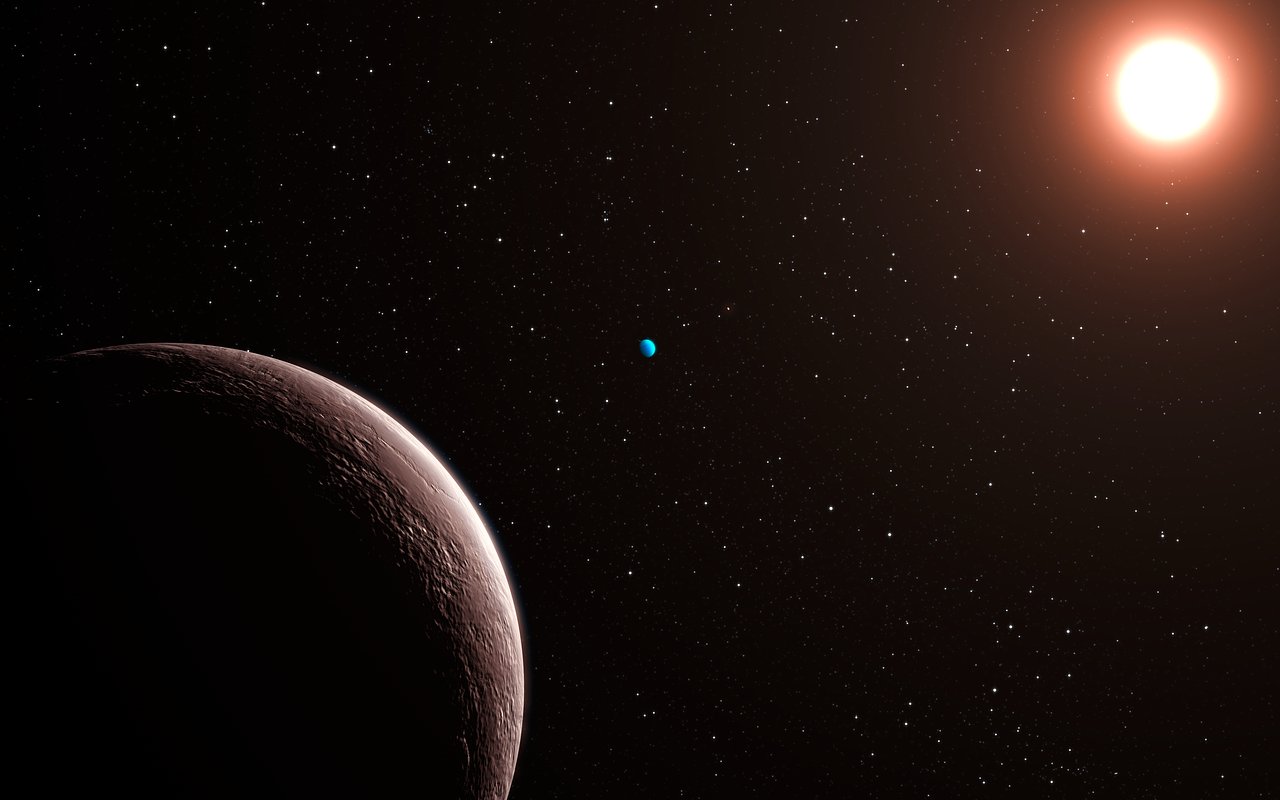NIRPS
Near Infra Red Planet Searcher
The NIRPS (Near Infra Red Planet Searcher) instrument will be a planet-hunter at the ESO 3.6-m telescope at the La Silla Observatory in Chile. Built by an international collaboration led by the Institute for Research on Exoplanets (iREX) team at the Université de Montréal and the Observatoire Astronomique de l’Université de Genève, NIRPS will be an infrared spectrograph designed to detect Earth-like rocky planets around the coldest stars.
NIRPS will complement the HARPS (High Accuracy Radial velocity Planet Searcher) instrument currently attached to the ESO 3.6-m telescope. HARPS is the world’s most productive planet-hunting instrument using the radial velocity method, and it has revolutionised our understanding of exoplanetary systems. NIRPS is the “red arm” of HARPS, extending its capability into the infrared and allowing astronomers to characterise planetary systems.
“Working simultaneously with HARPS at the ESO 3.6-metre telescope, NIRPS will play a key role in identifying rocky planets and habitable worlds,” comments Claudio Melo, Head of ESO’s Office for Science in Chile. “Once we know where to look, the VLT, the ELT and the James Webb Space Telescope — among others — will scrutinise the planet’s atmosphere, looking for signals of life.”
The main goal of NIRPS will be to use the radial velocity method to detect and characterise planets orbiting cool, red, M-type red dwarf stars. This method is one of many used to detect planets orbiting around other stars. As the planet orbits, its gravitational pull causes the parent star to move back and forth, or “wobble”. When the star moves towards us, its spectrum is blueshifted, and when the star moves away from us, it is redshifted. By regularly looking at the spectrum of a star — and thus measuring its velocity — astronomers can determine whether it moves periodically under the influence of a companion — a planet. With super-sensitive spectrographs such as NIRPS and HARPS, the shifts can be measured and used to infer details of a planet’s mass and orbit.
“We can observe and collect much more light if we use both NIRPS and HARPS simultaneously,” says François Bouchy, from the Observatory of Geneva University. “Also, observing light at different wavelengths helps us to disentangle planetary signals and stellar activity. This is paramount if we want to find Earth-like planets around other stars.”
In particular, NIRPS aims to find Earth-like rocky planets that could potentially be habitable. M-type stars, which are stars with between 10% and 50% of the mass of the Sun, are of particular interest because the gravitational influence of an orbiting planet is much greater on a small, low-mass star than on a large one, and hence their planets are more easily detectable. To benefit from this fact, however, NIRPS needs to observe in the infrared where such small, cold stars emit most of their light.
Since M-type stars are less luminous, their habitable zones are much closer than for stars like our Sun, and so the orbital periods of planets in this zone are much shorter than the orbital period of Earth — on the order of weeks instead of a year. This means that it takes much less time to detect and confirm exoplanets orbiting such stars. Excitingly, Earth-like planets are expected to be in abundance around such stars; research suggests that between 40–45% of M-type stars are expected to host Earth-like planets in their habitable zones.
So how will NIRPS work? The light coming from the ESO 3.6-metre telescope passes through an adaptive optics module that corrects for the distortions caused by the atmosphere and concentrates the stellar light. This concentrated light will be injected into fibres that lead into the spectrograph. The light will be split, with the optical light going into HARPS and the infrared light going to NIRPS. Inside NIRPS, the light will then be dispersed by a device called a grating and then imaged in a camera.
This is the first time adaptive optics have been combined with optical fibres. Along with an elegant optical design, this has allowed NIRPS to be built as a more compact and simpler instrument. This concept will be very important for future high-resolution spectroscopic instruments that will be mounted at the ELT (such as ANDES, which is at the planning stage).
“HARPS and NIRPS together will be among the most powerful instruments in the southern hemisphere to carry out follow-up observations of stars harbouring transiting planets with the aim of deriving their density and constraining their internal structure,” concludes Rene Doyon, from the Université de Montréal. “We believe that the exoplanet community will use the ESO 3.6-metre telescope with HARPS and NIRPS intensively during the follow-up phase of space missions like TESS and later PLATO. Since they produce such high-fidelity spectra, NIRPS and HARPS will also be used for projects related to chemical abundances, stellar magnetism and stellar evolution.”.
NIRPSThis table lists the global capabilities of the instrument.
|
